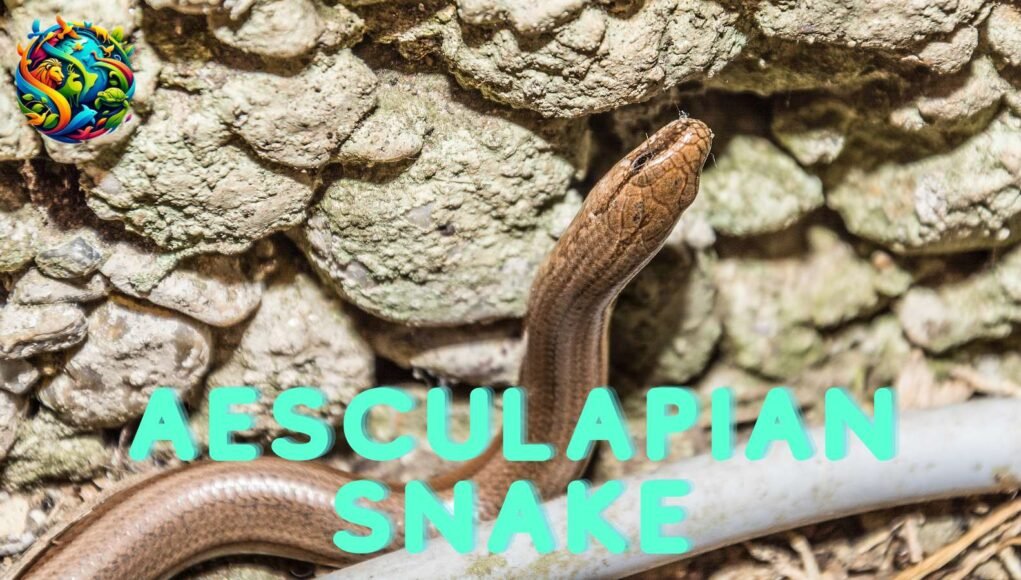Aesculapian Snake: The Serpent of Healing and Mythology
Introduction:
The Aesculapian Snake (Zamenis longissimus) is a non-venomous snake native to Europe, revered for its historical association with medicine and healing. This slender and agile climber is named after Asclepius, the Greek god of medicine, whose staff entwined by a snake remains a universal symbol of healthcare today.
This species is one of the longest snakes in Europe, reaching impressive lengths of up to 2 meters (6.5 feet). Although harmless to humans, it is a skilled predator, known for its ability to climb trees and hunt birds and rodents.
Amazing Facts:
- Symbol of Medicine: The Aesculapian Snake is believed to be the inspiration for the Rod of Asclepius, the symbol of modern medicine.
- Tree Climber: Unlike many snakes, it can climb vertical tree trunks with ease.
- Long Lifespan: Some individuals can live over 20 years in the wild.
- Silent Hunter: It relies on ambush and constriction to catch prey rather than venom.
- Ancient Legend: In Roman mythology, it was said that a sacred snake of Asclepius brought healing to plague-stricken Rome.
- Heat-Loving Reptile: Prefers warm, sunlit habitats and can often be seen basking on rocks or logs.
Habitat and Diet:
Habitat
The Aesculapian Snake thrives in:
- Woodlands and forest edges
- Rocky hillsides and ruins
- Riversides and grasslands
- Parks and gardens in urban areas
It is primarily found in Central and Southern Europe, including France, Italy, Germany, Greece, and the Balkans. Some isolated populations also exist in the United Kingdom and the Caucasus region.
Diet
As a carnivorous constrictor, it preys on:
- Rodents (mice, voles, and rats)
- Birds and their eggs
- Small reptiles
- Amphibians
Young snakes primarily consume insects and small lizards before transitioning to larger prey as they grow.
Appearance:
- Length: 1.2 to 2 meters (4 to 6.5 feet)
- Colouration: Olive-brown to dark green, sometimes with faint yellow speckles.
- Scales: smooth and glossy, giving the snake a sleek appearance.
- Head Shape: small and elongated, with round, golden eyes.
Its elegant, slender body allows it to move quickly through trees and shrubs, making it one of the most agile snakes in Europe.
Types/Subspecies of Aesculapian Snake:
There are closely related species and subspecies within the Aesculapian Snake family:
- Zamenis longissimus (Common Aesculapian Snake): The primary species found across Europe.
- Zamenis lineatus (Italian Aesculapian Snake): A subspecies found in southern Italy, distinguished by striped patterns.
- Zamenis hohenackeri (Caucasian Aesculapian Snake): found in the Caucasus region, slightly smaller and darker than its European counterpart.
Predators and Threats:
Natural Predators
Despite its size and agility, the Aesculapian Snake faces threats from:
Human-Related Threats:
- Habitat Destruction: Urbanisation and deforestation reduce its natural living space.
- Road Accidents: Many snakes fall victim to road traffic while searching for food or mates.
- Persecution: Although harmless, some people kill it out of fear or misunderstanding.
Mating and Reproduction:
- Mating Season: spring to early summer.
- Courtship: Males engage in “wrestling matches” to compete for mates.
- Egg-Laying: Females lay 5 to 15 eggs in warm, humid locations such as rotting logs or compost piles.
- Hatching: After 6–10 weeks, the young snakes emerge, measuring around 25 cm (10 inches) in length.
Unlike many reptiles, Aesculapian snakes do not provide parental care, and the hatchlings must fend for themselves from birth.
How Aesculapian Snakes Communicate:
These snakes rely on body language, chemical signals, and vibrations to communicate.
- Tongue Flicking: Detects pheromones and prey scent.
- Coiling and Posturing: Used as a defence mechanism to appear larger and more intimidating.
- Hissing: Rare, but sometimes used to deter threats.
Unlike venomous species, Aesculapian snakes rarely bite and prefer to escape when threatened.
Aesculapian Snakes in Culture and Movies:
Symbolism and Mythology
- Greek and Roman mythology: associated with Asclepius, the god of healing.
- Modern Medicine: The snake on the rod of Asclepius is believed to represent this species.
Movies and Documentaries
Although not as famous as venomous snakes, Aesculapian snakes have been featured in:
- Nature documentaries on European wildlife.
- Historical dramas showcasing ancient Greek and Roman medicine.
Its mythological connections make it an important cultural and scientific icon.
Pronunciation of “Aesculapian Snake” in Different Languages:
- English: Es-kyoo-lay-pee-an Snake
- French: Serpent d’Esculape
- Spanish: Serpiente de Esculapio
- German: Äskulapnatter
- Italian: Serpente di Esculapio
- Russian: Эскулапов змей (Eskulapov zmey)
- Greek: Φίδι του Ασκληπιού (Fídi tou Asklipioú)
FAQs:
Q: Is the Aesculapian Snake venomous?
A: No, it is a non-venomous species that relies on constriction to subdue its prey.
Q: Where can I find Aesculapian Snakes?
A: They are found in Central and Southern Europe, particularly in forests, rocky slopes, and near rivers.
Q: Why is this snake associated with medicine?
A: It is believed to have inspired the Rod of Asclepius, the symbol of healthcare.
Q: How big do they get?
A: They typically grow between 1.2 and 2 meters (4 to 6.5 feet) in length.
Q: Can Aesculapian snakes be kept as pets?
A: While some are kept in captivity, they require large enclosures and a proper diet, making them challenging pets for beginners.
Learn more about Aesculapian Snake




